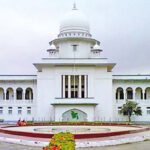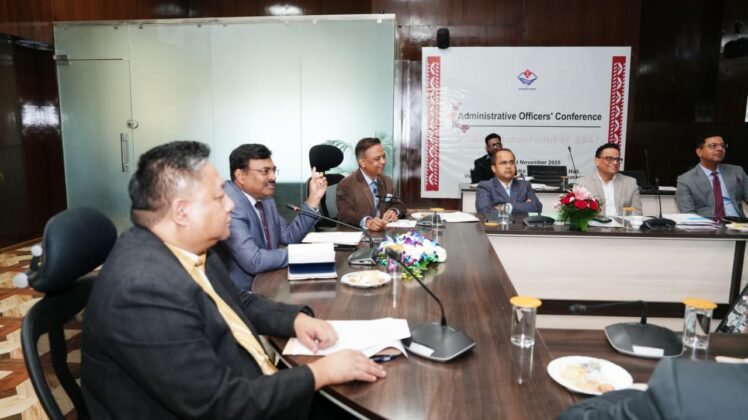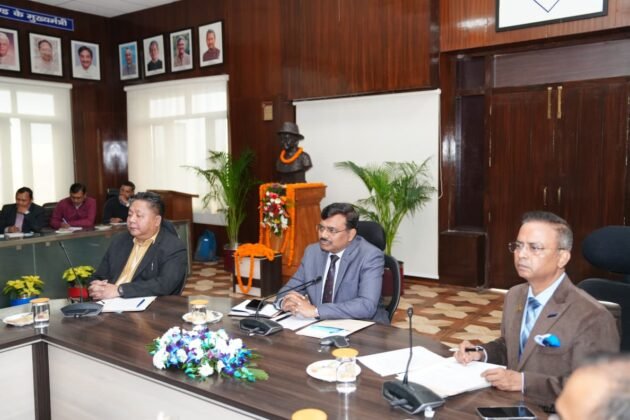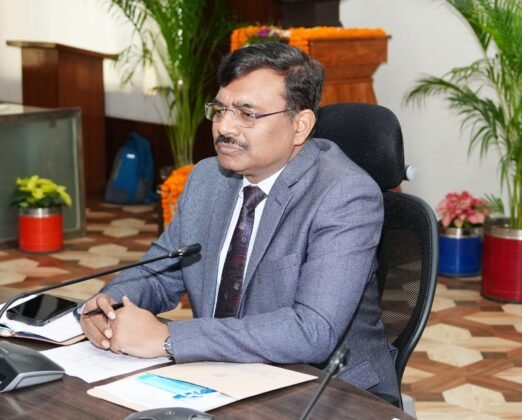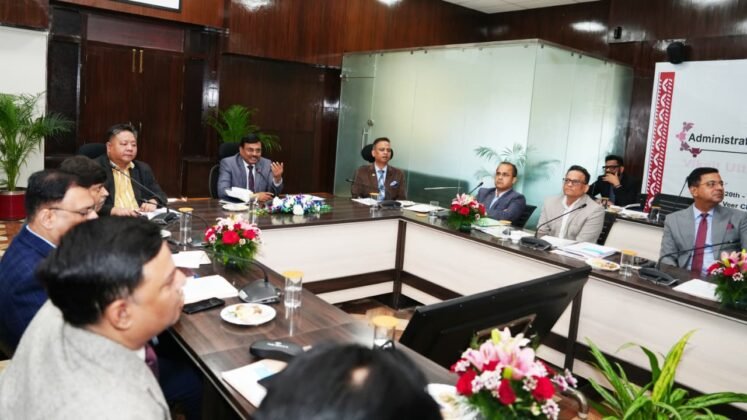DEHRADUN: The second day of the Administrative Officers Conference 2025 was held in the city on Friday under the chairmanship of Chief Secretary Anand Bardhan, where district magistrates from Almora, Pauri Garhwal, Dehradun, Tehri Garhwal, Chamoli, Nainital and Uttarkashi presented detailed reports on their best practices. Our correspondent reports that the session focused on sustainable development, livelihood enhancement, youth empowerment and district-level innovations.
District Magistrate Almora delivered a presentation on Sports, Health and Wellness, emphasising the district’s efforts to nurture young sporting talent. She said that a dedicated sports and community fitness zone had been created to provide improved facilities for aspiring athletes. She added that one hundred economically weaker children were receiving free coaching, training and essential support. “Our aim is to ensure that no deserving child is held back due to financial constraints,” the official said.
District Magistrate Pauri Garhwal presented initiatives relating to Pine Needles and Invasive Biomass Livelihoods. She highlighted the role of women’s self-help groups in generating income through biomass production from chir pine and lantana. Around 1,800 tonnes of invasive species have been cleared, with 280 women directly involved in the work. “These efforts support women’s income while reducing forest fire threats and limiting damage from wild animals,” she said. Our correspondent adds that this model drew appreciation for simultaneously addressing ecology and livelihood.
District Magistrate Nainital outlined a roadmap on Urban Infrastructure and Mobility, focusing on sustainable urban planning for the hill town. The Chief Secretary instructed all urban local bodies to prepare similar roadmaps to ensure long-term, target-based development.
A detailed presentation was given by the District Magistrate Dehradun on Child Beggary Prevention. He explained that a dedicated centre had been established to bring children engaged in street begging into mainstream education, recreational activities and skill development. “Our effort is to give these children an alternative future built on dignity,” he said. The Municipal Commissioner of Dehradun also presented a model outlining solutions to urban problems and ongoing municipal reforms.
District Magistrate Tehri Garhwal discussed Youth Engagement and Positive Pathways, noting that the district was focusing on self-employment and skill development. He proposed capsule courses, mobility support, a career hub and flexible skill pathways to motivate young people. “We want to channel the energy of youth towards productive and future-ready opportunities,” he said.
District Magistrate Uttarkashi gave a detailed account of the devastation caused by the recent Dharali disaster and explained preventive steps being taken. He presented a combined project on ecology and livelihood, which received praise from attending officials. Our correspondent adds that the presentation highlighted the importance of resilience planning in disaster-prone regions.
Chief Secretary Bardhan commended the districts for innovative work in sports development, green livelihoods and youth empowerment. He said, “These best practices reflect the evolving mindset of our districts. The task before us is to scale these models and align future plans with the vision of Viksit Uttarakhand 2047.” He instructed all officials to strengthen district-level initiatives and integrate them with long-term development goals.
Senior officials including Principal Secretary R.K. Sudhanshu, L.L. Fanai, R. Meenakshi Sundaram and others were present during the session. The Chief Secretary emphasised that district innovation was essential to shaping the state’s developmental roadmap. “Every district must build on its strengths and design replicable models that respond to local needs,” he said.
The conference concluded with a commitment to expand grassroots livelihood opportunities, enhance youth-centric programmes, strengthen urban governance and improve ecological conservation efforts across the state. Officials said continuous monitoring would ensure that district best practices evolve into state-wide development frameworks capable of delivering lasting impact.










